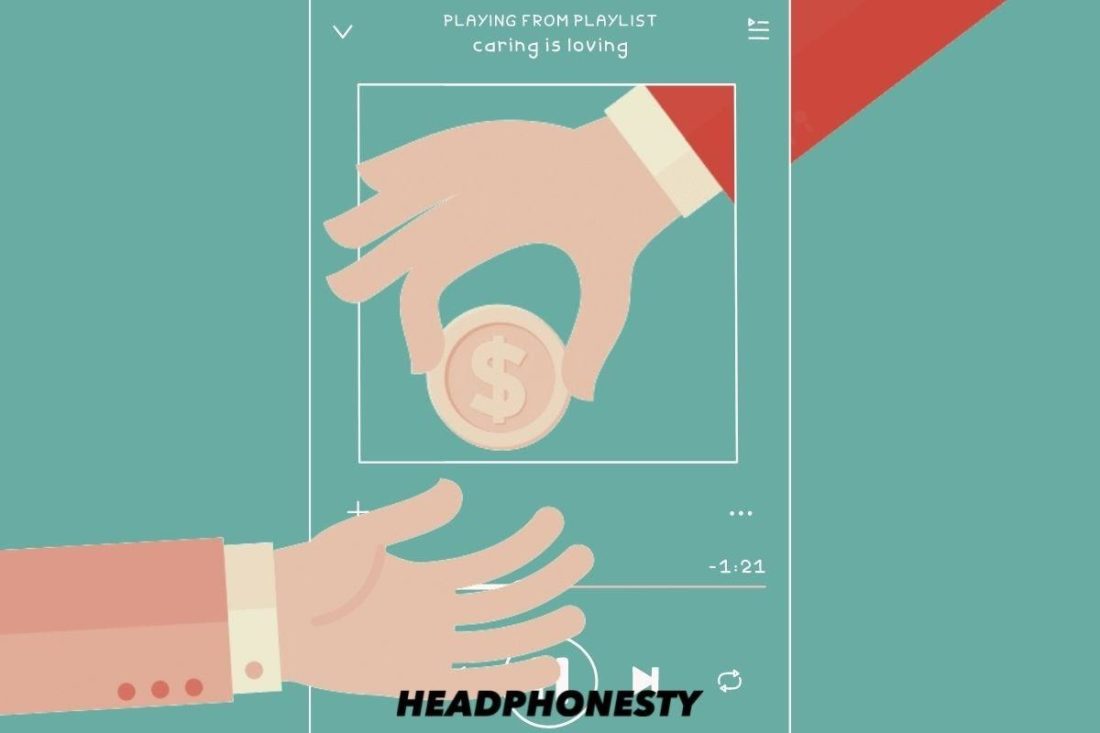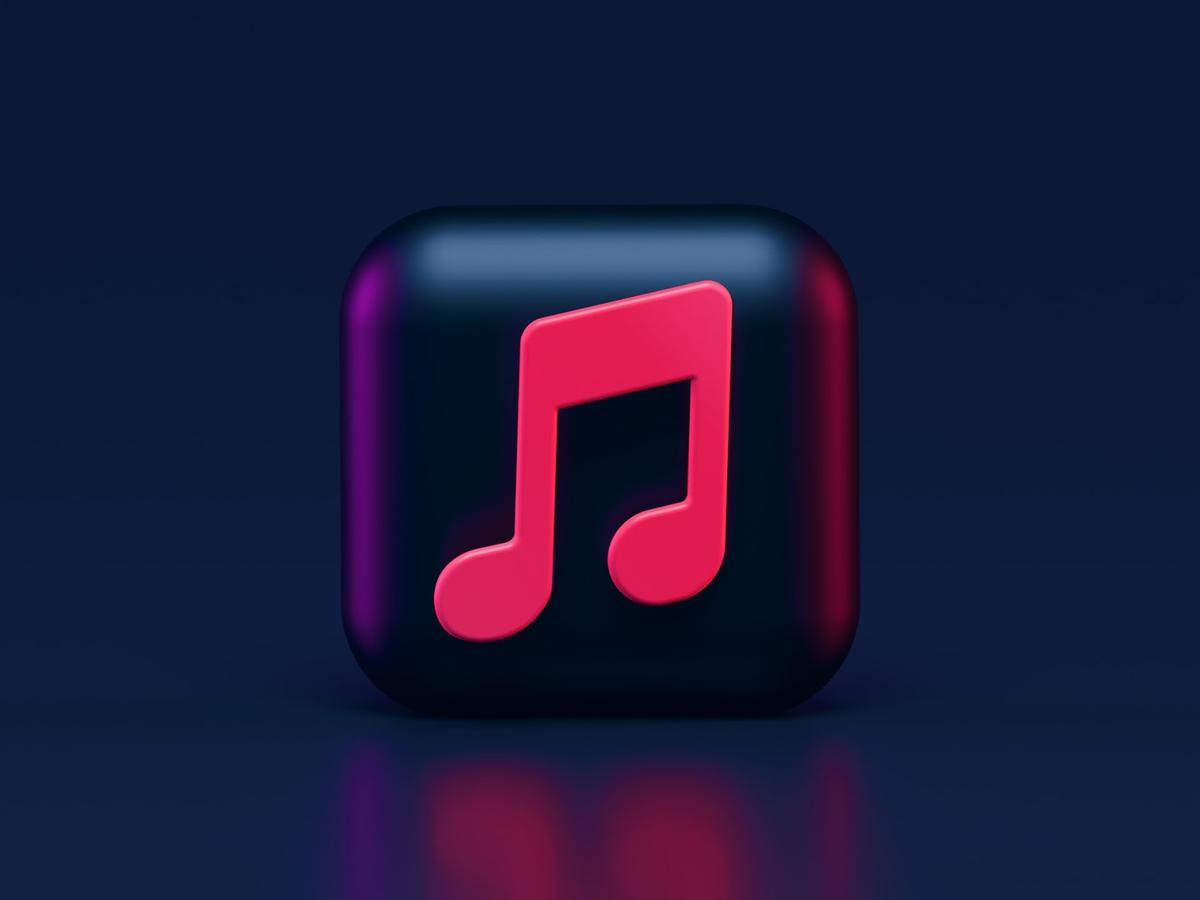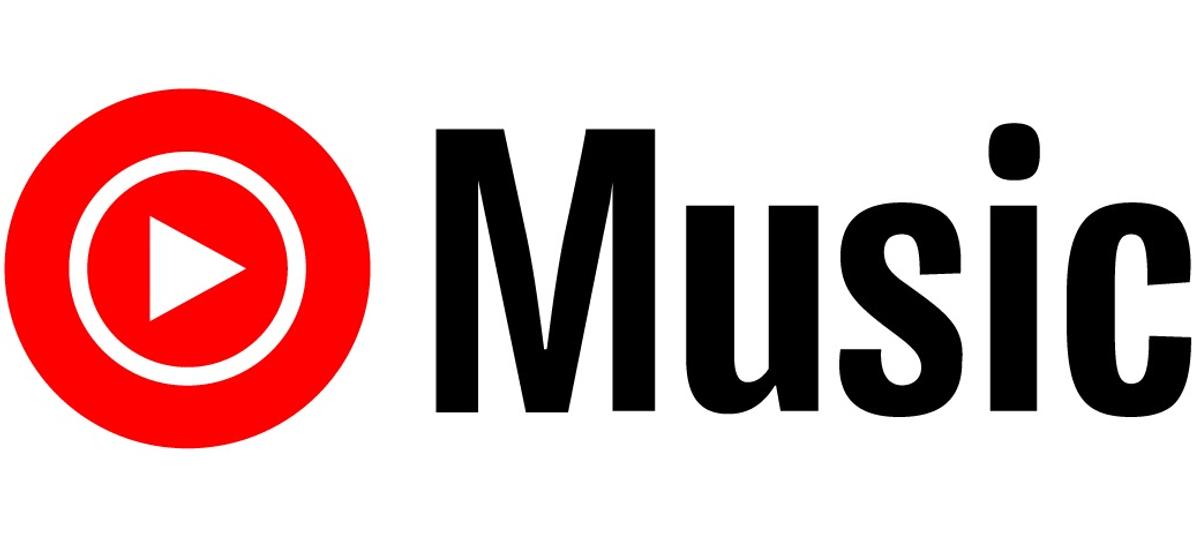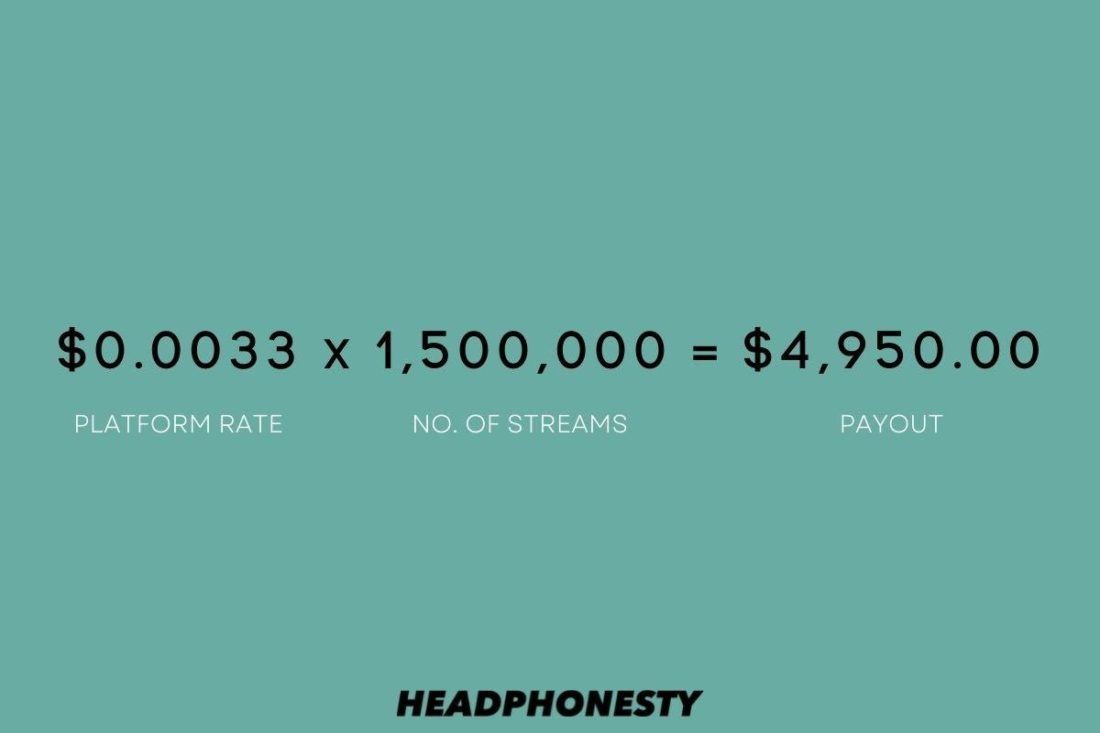what do you need to get paid for music streaming
Let's take a closer look at how much your favorite artists earn every fourth dimension you lot click 'play' on Spotify and other music streaming platforms.
As fans, nosotros only want the best for our favorite artists. And since not everyone can buy physical albums or merchandise, a lot of us tin but support them past streaming their music on different platforms. But, at some point we ask ourselves: is that enough?
Unfortunately, a lot of music streaming platforms don't conspicuously land how much they pay artists, while some platforms only pay the creative person a fraction of a cent every time you play a vocal. There's no standard rate, though. And so, if your goal was to back up your favorite artist, you may want to pick the streaming platform that pays the well-nigh.
To help you with that, we're diving deep to find out how much Spotify and other platforms pay per stream. Let'due south get right into it!
three Types of Creative person Royalties Streaming Platforms Use
The paid subscription pricing model is taking over the planet now. In 2020, the full sales of physical anthology copies dropped by a whopping thirty%, while paid subscriptions grew 12% from the previous year.
Despite the shift in how people heed to music, artists still earn payouts (albeit a lot smaller) from royalties – only like they would from physical copy sales. These streaming platforms pay the artists to put their songs on their library. As a return, the artists will get a certain corporeality of payouts every time users play their songs.
At that place are 3 different types of payouts that music streaming platforms use to pay artists:

Mechanical Royalties
Mechanical royalties are generated every time a musical composition is physically or digitally reproduced.
In the instance of interactive streaming platforms, where users get to make up one's mind what songs to play, digital reproduction of a song happens when a user presses 'play'. While in non-interactive streaming platforms (e.g., AM/FM Radio), the royalty falls under the 'public performance royalties.'
In mechanical royalties, artists are owed a certain amount of coin every time their songs get played every bit per the Copyright Act. For songs under 5 minutes, the mechanical royalty rate is 9.i cents per stream and one.75 cents per minute for songs over 5 minutes.
Public Functioning Royalties
Public operation royalties are the fees that artists and publishers receive every fourth dimension their music is broadcasted or played publicly (e.chiliad., over AM/FM radio, jukebox, restaurants, supermarket, etc.).
This is handled past the Performance Rights Organizations (PROs). PROs collect license fees from parties who employ music and pay songwriters and publishers in the class of public performance royalties.
These royalties are more often than not discussed by the streaming platform with the PRO. It'southward typically effectually vi-7% of the platform'south total acquirement, taken out from the All-In Royalty Puddle.
In the United states, the public performance royalty for digital streams is established past the Copyright Royalty Board (CRB).
Payout to Recording Owners
When you inquire about how much artists make on streaming platforms, 99 percent of the time, you'll exist looking at the amount of payout to recording owners.
The payout to recording owners is the whole corporeality of money containing all types of royalty tied to a music which will be distributed to all parties involved (east.g. producers, songwriters, musicians, not-featured singers, etc.).
Here'south how the digital streaming amount is divvied up according to SoundExchange:
- 45% to the featured artists
- five% to the non-featured artists
- 50% to the rights owners of the music
Depending on how the artist approaches the deal with streaming platforms, they can be making anywhere from 45% to 100% of the payout. Permit'south take a look at an example to help yous sympathise it.
Justin Bieber's song, Love Yourself, was written past Ed Sheeran, Benjamin Levin, and Bieber. It was released by Def Jam record label.
The song has been streamed 17.4 million times. With the $0.91 per stream mechanical royalty, information technology should generate about $xv,834,000.
The streaming platforms will pay the whole sum to Def Jam every bit the label. Def Jam volition then distribute the whole sum to anybody involved in making the song co-ordinate to their roles.
The explanation above is an overly simplified explanation of the royalty distribution – but that's the gist of it.
How Much Exercise Music Streaming Platforms Pay per Stream?
While Spotify, Apple Music, and YouTube Music are probably the ones dominating the music streaming market place, at that place are other platforms that you can use to stream your favorite tunes.
There are dozens of music streaming platforms on the planet, ranging from giants with a global market like Spotify to niche services like Tidal. Each platform has its unique pricing model, selling point, and user base of operations, hence the departure in artists' earning corporeality per stream.
This section will discuss the amount of payout that streaming platforms requite to the artists they feature. The table below is an overview of how much they pay the artist for each stream, and how many streams it takes to earn $1,000.
| Platform | Pay per stream | Streams to get $1,000 |
|---|---|---|
| Tidal | $0.12 | 8,333 |
| Apple Music | $0.01 | 100,000 |
| Amazon Music | $0.004 | 250,000 |
| Spotify | $0.0033 | 303,030 |
| YouTube Music | $0.002 | 500,000 |
| Pandora | $0.0013 | 769,231 |
| Deezer | $0.0011 | 909,091 |
Apple Music

Apple Music is the 2d most popular music streaming platform in the U.S., with over 72 million agile users in 2020, just behind Spotify. The company has publicly stated that its boilerplate payout per stream is $0.01.
While one-10th of a cent doesn't seem much, Apple actually has ane of the biggest per-stream pay compared to other platforms.
But that ane cent doesn't immediately go to the artists' pockets. Like other major streaming platforms, Apple Music runs a pro-rata model that distributes 52% of the platform'southward advertizing acquirement to music labels indiscriminately.
Deezer

Deezer isn't the most popular music streaming platform past any means, but information technology currently has more than than 14 million monthly users, half of whom are paid subscribers.
The company stated that they desire to pay artists adequately through their user-centric payment system dubbed as "Pay who yous play." Because of this, when a paid subscriber listens to only 1 artist per month, their entire subscription fee will go to that creative person (with a small-scale platform fee reduction).
Still, Deezer's per-stream payout is only nearly $0.0011 – which is on the lower spectrum compared to other platforms.
Amazon Music

Amazon Music is a widely pop music streaming platform with over 55 million subscribers in early on 2020. They take been reported to pay artists about $0.004 per play – which is effectually the average for digital streaming platforms.
Spotify

As the leading music streaming platform with over 200 1000000 monthly agile users, Spotify has a rather negative reputation for handing out artist payouts.
While the company is nevertheless to provide details about how much they pay per stream, a 2020 Business organisation Insider report found that artists earn as footling every bit $0.0033 per stream.
The somewhat low payout for artists has sparked the "Justice at Spotify" movement started by the Marriage of Musicians and Allied Workers. The movement demands that Spotify do several things, including:
- Pay musicians 1 cent per stream
- Adopt user-centric payment (like the i used by Deezer)
- Be more transparent with the revenue streams
- Finish legal battles intended to impoverish artists
Spotify has at to the lowest degree 12 dissimilar pricing schemes for their premium plan, ranging from a whopping $xiii.12 per month in the U.K. to as depression equally $one.7 per month in India.
Pandora

Pandora started equally an cyberspace radio – information technology's what they're well-nigh famous for. But as a music streaming platform, Pandora pays artists as lilliputian as $0.0013 per play in 2021.
The smaller amount of payout is likely related to their dwindling number of users. In Q2 of 2021, Pandora had 55.1 million active users, which is on a down-trend from their 81.v one thousand thousand users in 2016. While it is one of the oldest players in the music streaming scene, it'south only available in the U.S. – which is why it has a very express user base.
Pandora's free plan allows y'all to search and play whatever song yous want without limit (different Spotify) – but you lot'll have to lookout man an advertizement every time yous exercise so.
YouTube Music

As the subsidiary of the world's most popular streaming platform, YouTube Music pays artists as little as $0.002 per stream. While YouTube Music doesn't really pay artists much, the platform's popularity combined with the on-video ads (for music videos streamed through YouTube) should brand the overall income marginally higher.
The payout from YouTube ads should be around $vii-ten per 1,000 impressions. But not every view counts as an impression, only nearly 30-40% of views on YouTube videos contain ads. Realistically speaking, a music video needs effectually 4,000 views to earn that $7-10.
Tidal

Tidal isn't as pop every bit others, but it'south the most generous music streaming platform that pays artists up to $0.12 per stream. Founded past the superstar rapper and producer JAY-Z, TIDAL seems to cater solely to those with a knack for high-fidelity music and capeesh musicians more than than other platforms
The seemingly pocket-sized payout by streaming platforms has financially bedridden many musicians – fifty-fifty superstars like Paul McCartney have signed petitions to modify the streaming economy. The Panthera leo's share of the payout goes to major record labels, while only a small portion of the money makes its way to musicians.
How Are the Streaming Payouts Calculated?
The basic payout calculation is quite simple: streaming platforms typically have a set payout rate per stream, multiplied past the number of streams.
For example, Spotify pays about $0.0033 per stream. While Spotify hasn't officially disclosed it, the per-stream payout should exist directly afflicted by its payout rate. Suppose you have an album that has generated one,500,000 streams on the platform, the payout would be something like:

In this example, $0.0033 is likely generated from Spotify'southward payout rate, which not all streaming platforms openly disclose. The payout rate and setup from one streaming platform to others may be drastically different, hence the inconsistency of the payout throughout dissimilar platforms.
For example, Apple has officially disclosed that they have a 52% payout rate. This means if Apple fabricated $1 million in revenue, they would distribute $520k to the artists co-ordinate to their stream count and other factors like streaming location and the type of users who stream the music.
Merely the actual amount that you receive may be less than the estimate higher up. There are many other variables similar the streaming location and subscription type (which we'll encompass beneath) that may affect the bodily payouts that the artists receive.
Factors affecting Streaming Payouts
While there are many variables that affect the streaming payout, the local streaming market and the type of users are the nearly prominent ones. Here'due south a little chip more information almost how the blazon of users and local markets bear on the corporeality of pay that artists receive.
Free vs. premium streams
The blazon of user who streams a certain track will determine how much the creative person receives from that transaction. Since streaming platforms use unlike subscription models, you can't really generalize the payout adding.
In the case of streaming platforms with ads-enabled free streaming with premium plans (like Spotify and Deezer), the boilerplate payout is determined past the sum of acquirement from subscriptions and ads.
Equally mentioned in a higher place, the boilerplate per-stream pay is likely calculated as a per centum of the platform'southward total acquirement. The more revenue that a platform gets, the higher per-stream pay that the artists receive.
For reference, in a 2017 study, Spotify reportedly had an Average Revenue Per User (ARPU) for premium subscribers at $four.81, while the ARPU for the ad-supported stream was only $0.51. While streams from either paid or free users are the same, the acquirement from ad-supported users is nowhere nearly what premium users generate.
Local streaming markets
Non all countries have the same market place situation, and that's why streams from different locations will generate different amounts of payout.
For example, users need to pay $nine.99 for a month of premium Spotify in the United States. Simply in smaller markets like Republic of indonesia, a month of premium Spotify membership is only around $3.99.
Basically, Spotify had to cut downwardly the subscription cost to compete with local streaming services like Joox, which charges only $1.50 per calendar month. Not just Spotify, only other streaming platforms like Apple Music and YouTube Music take had to adjust their prices in different markets they want to penetrate.
As mentioned higher up, the platform'due south total revenue directly impacts the payout that artists receive per stream. The lower the subscription price, the smaller per-stream payout artists get.
For Artists: How to Increase Earnings From Streaming Platforms
If you lot're an creative person looking to get more income from streaming platforms, at that place are several things that you can try.
Consistently release new music
The starting time and most obvious pace to try is growing your fanbase by consistently releasing new music. Promoting your new releases through highly-available social media platforms is as well a neat mode to generate initial exposure for your music.
Release music internationally
The 2d thing you can endeavour is by releasing music in internationally-spoken languages, similar English. For instance, listeners from the U.South. generate $0.0035 per stream on Spotify, whereas Italian listeners only pay about $0.0019. Past releasing music in popular languages (or making beats without lyrics), you'll have a improve chance of getting streams from loftier-paying regions.
Go your music to curated playlists
The third method is climbing your fashion into popular curated playlists. Streaming platforms often have millions of user-generated playlists – some of which are more popular than others.
In Spotify, Rap Caviar is one of the most pop hip-hop playlists on the platform. Whatever new runway that stumbles its way into that playlist will receive a massive stream boost. When you can get your music to popular playlists in its genre, you're pretty much set to have a steady flow of per-stream payout.
Conclusion
At present that you've learned how much each streaming platform pays their artists, you lot should be able to pick one that shows the well-nigh appreciation to your favorite musician. While the per-stream payout mentioned in this commodity is generally accurate, details on how each platform calculates the payout are often undisclosed.
Do yous have a favorite music streaming platform that we didn't cover here? Let us know in the comments.
Source: https://www.headphonesty.com/2021/11/how-much-does-spotify-pay-per-stream/